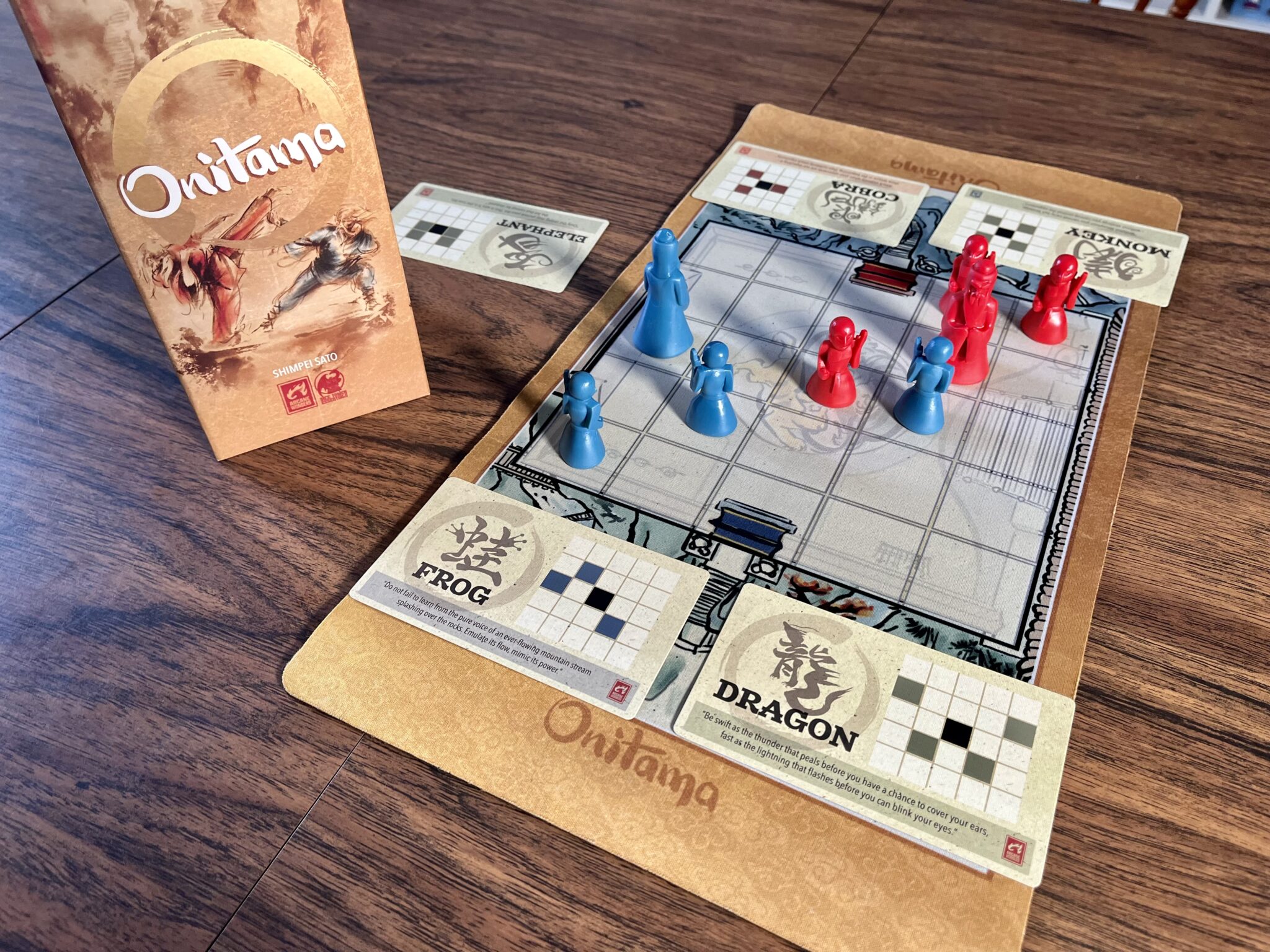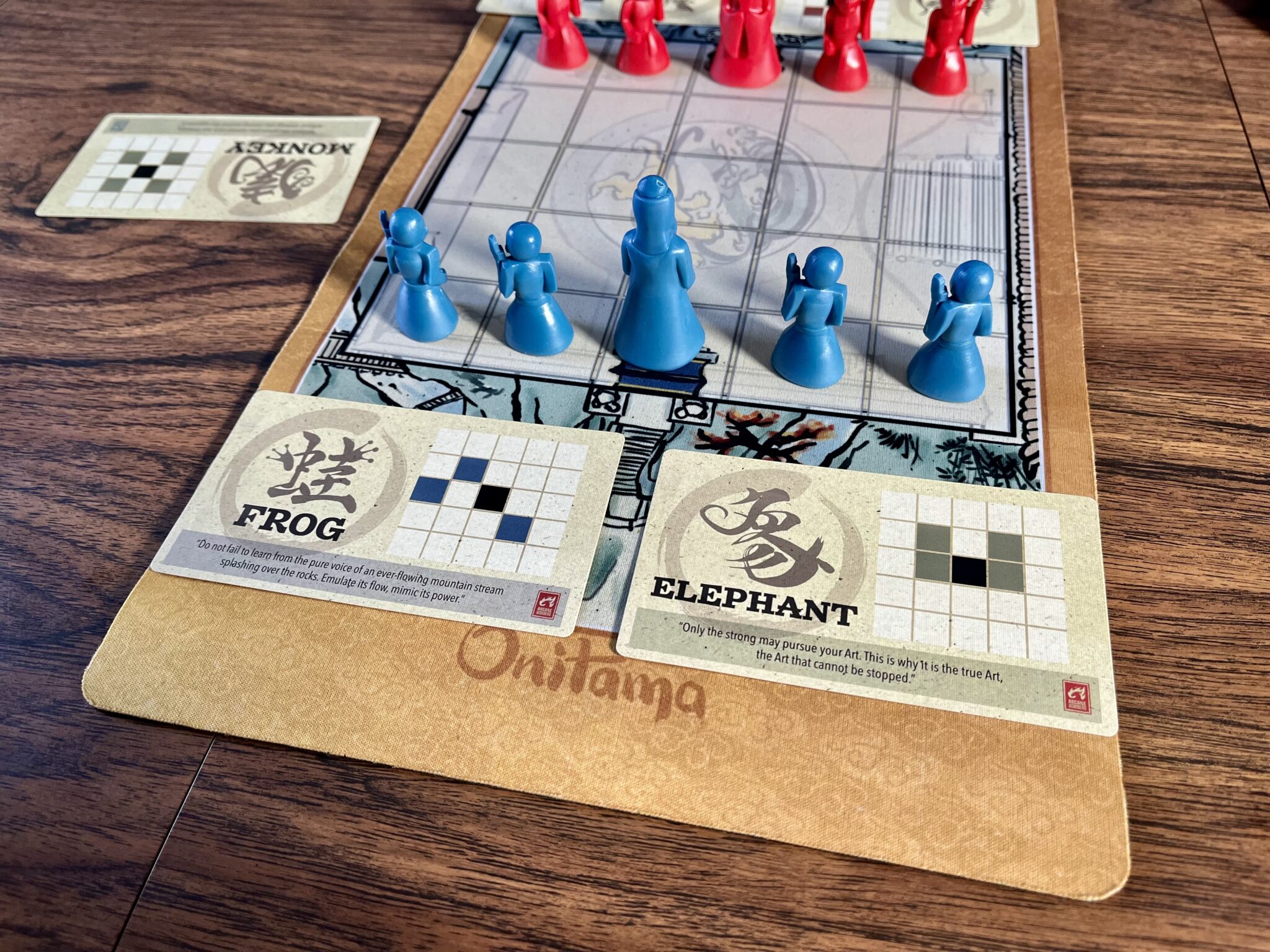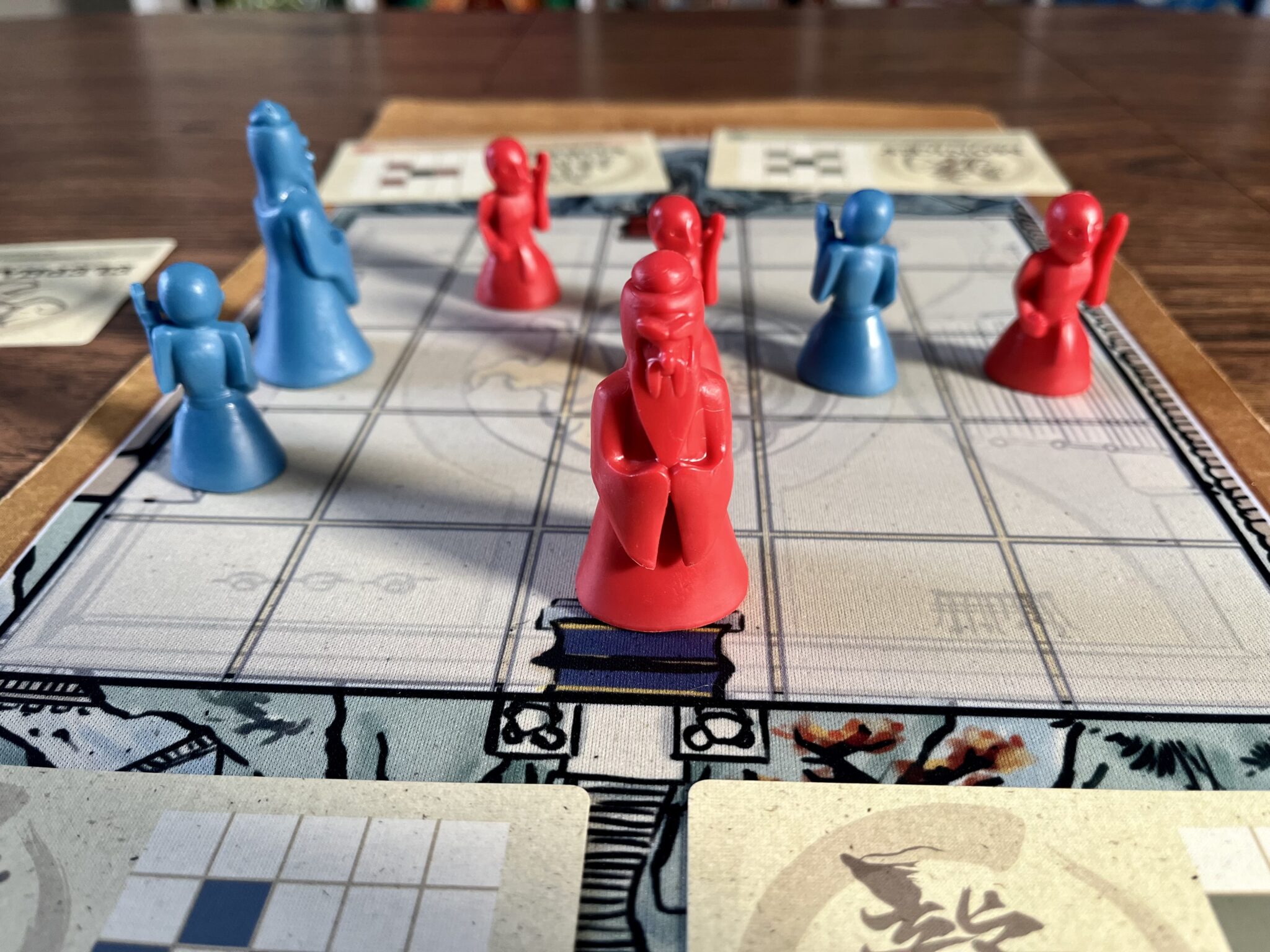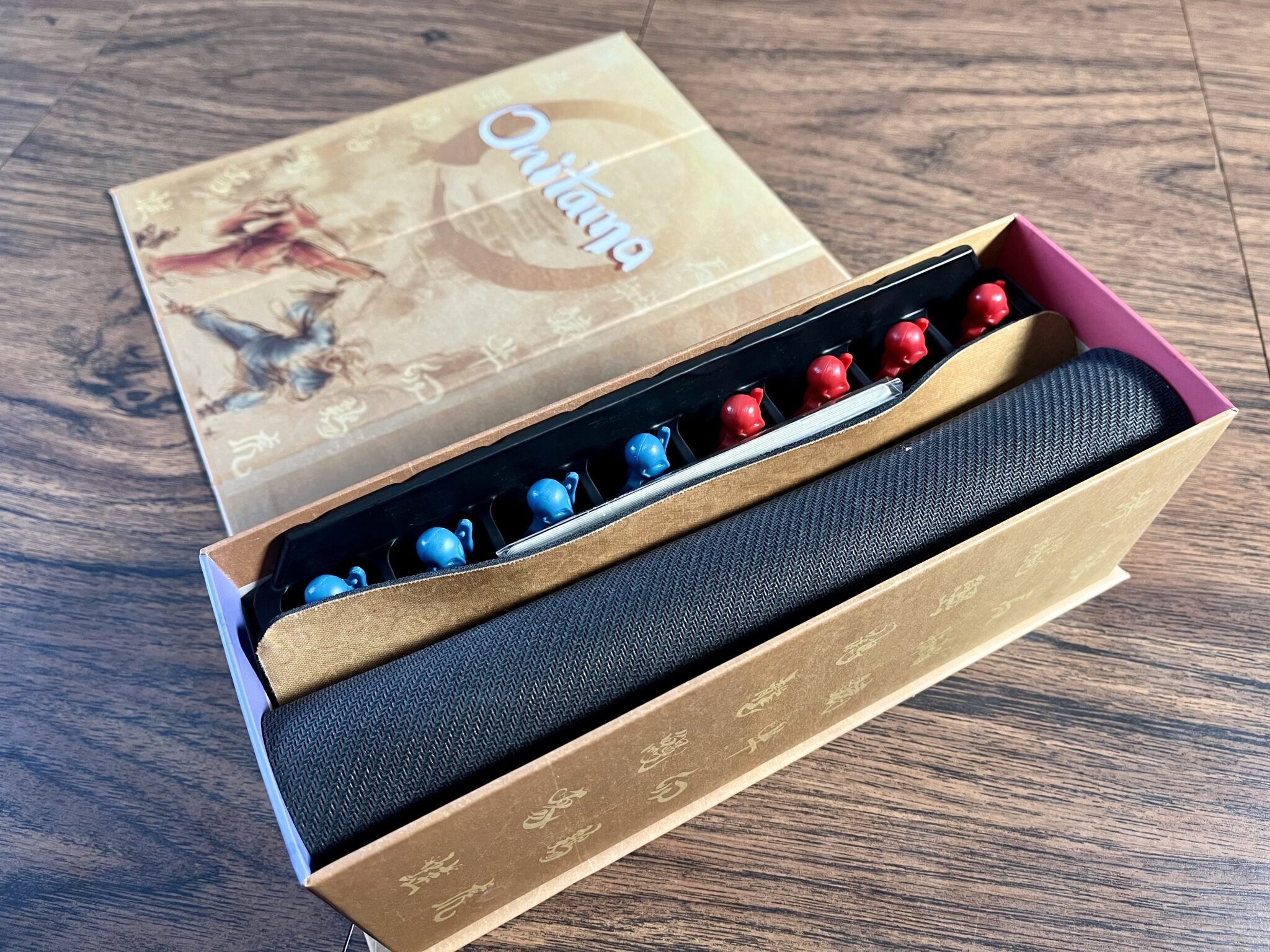
Onitama is a 2 player only abstract strategy game played on a 5×5 board. Players use their pawns to attack their opponent by using the movement listed on their movement cards. This is a very strategic and tactical game that takes 15-20 minutes to play. The game was designed by Shimpei Sato and published by Arcane Wonders in 2014 but is still relevant and has had other expansions and variants made since. It’s won many awards, and I, for one, am very impressed with what it offers and hope to see other games inspired by it.
What’s in the Box?
- 2 Master Pawns (red and blue)
- 8 Student Pawns (4 red, 4 blue)
- 1 Rollup Board
- 16 Move Cards
How’s it Play?
Players are in control of their color pawns, which consists of 1 master pawn and 4 student pawns. Based off of the classic game chess, it uses grid movement to move pawns to defeat the other player’s pawns. Players play on a 5×5 grid where movement for each of their pawns is determined by the current movement cards they have in front of them. 5 of these movement cards are used per game, with 2 placed in front of each player and one that helps with the rotation of the cards.

The overall goal is to either defeat the other player’s master pawn by landing one of your pawns on top of their master pawn, or by moving your master pawn to the starting space of your opponent’s master pawn.
The first player uses one of their movement cards to move a pawn, and the card they used is then turned 180 degrees to face the other player. The opponent then uses one of their two movement cards to move one of their pawns and rotates it 180 degrees to face their opponent. The next part it critical to understanding play: after each player has moved/rotated a card, they must take the card discarded by their opponent for possible movement in the future. Play continues in this manner, each one using a movement card and then swapping cards with the opponent.

When looking at the cards themselves, each one shows movement relative to the pawn that would be moved. The black square is the current location of any pawn, and the other colored boxes are possible placed where that pawn could move if that movement card is used for that pawn. Movement cards can be used for any of the 5 pawns; however, you cannot move your own pawn on top of another one of your pawns.
Because you use 5 different movements cards each time you play the game, there’s plenty of replay value and the strategy will differ for each game. The win condition remains the same, though: the player who defeats their opponent’s master pawn, or moves their own master pawn to the starting space of their opponent’s master pawn, wins.
The Verdict
This is one of the best one versus one abstract strategy games out there. The game is super easy to pick up, mostly due to the the fact that most people are familiar with the mechanics of chess. Unlike chess, this game is quick, and although it still require tactical decisions, it doesn’t require the time or brain space that chess requires.
Onitama is based off different movement cards to be able to attack with different methods. Sometimes these cards feel either too limiting or too similar to others, but even if they limit you, they also limit the other player. I feel like there should be groups of cards to help so cards are not so similar each time you play. Depending on the movement cards available, Onitama can end up being slow and uneventful.

But when good cards are matched with each other, you have to decide if you want to use a card for an attack versus using it to move and giving it to your opponent. Because your opponent can use that card against you on their next turn. This makes using cards very tactical, but also can cause the best ones to be hoarded and not used until everything is perfect for them to gain something over the other player.
I really enjoy what Onitama does. The board is just the right size, and there are just enough pawns to lose some but still continue toward victory. Movement is different each time you play the game, which, again, enhances replay value. I also like that there are 2 different ways you can win the game, which means a player can be come back from having fewer pawns by moving their master pawn smartly.
The theme is right on. The packaging and storage is great. Components are top of the line. Overall it’s a very impressive game, and I know I’ll be bringing it back to my game table.

Images via Arcane Wonders
Have strong thoughts about this piece you need to share? Or maybe there’s something else on your mind you’re wanting to talk about with fellow Fandomentals? Head on over to our Community server to join in the conversation!

